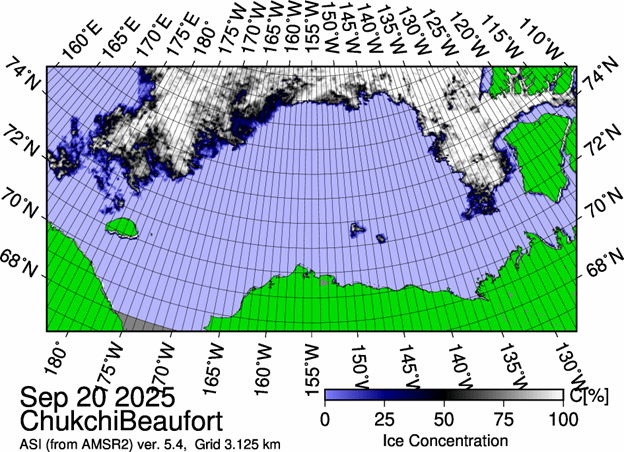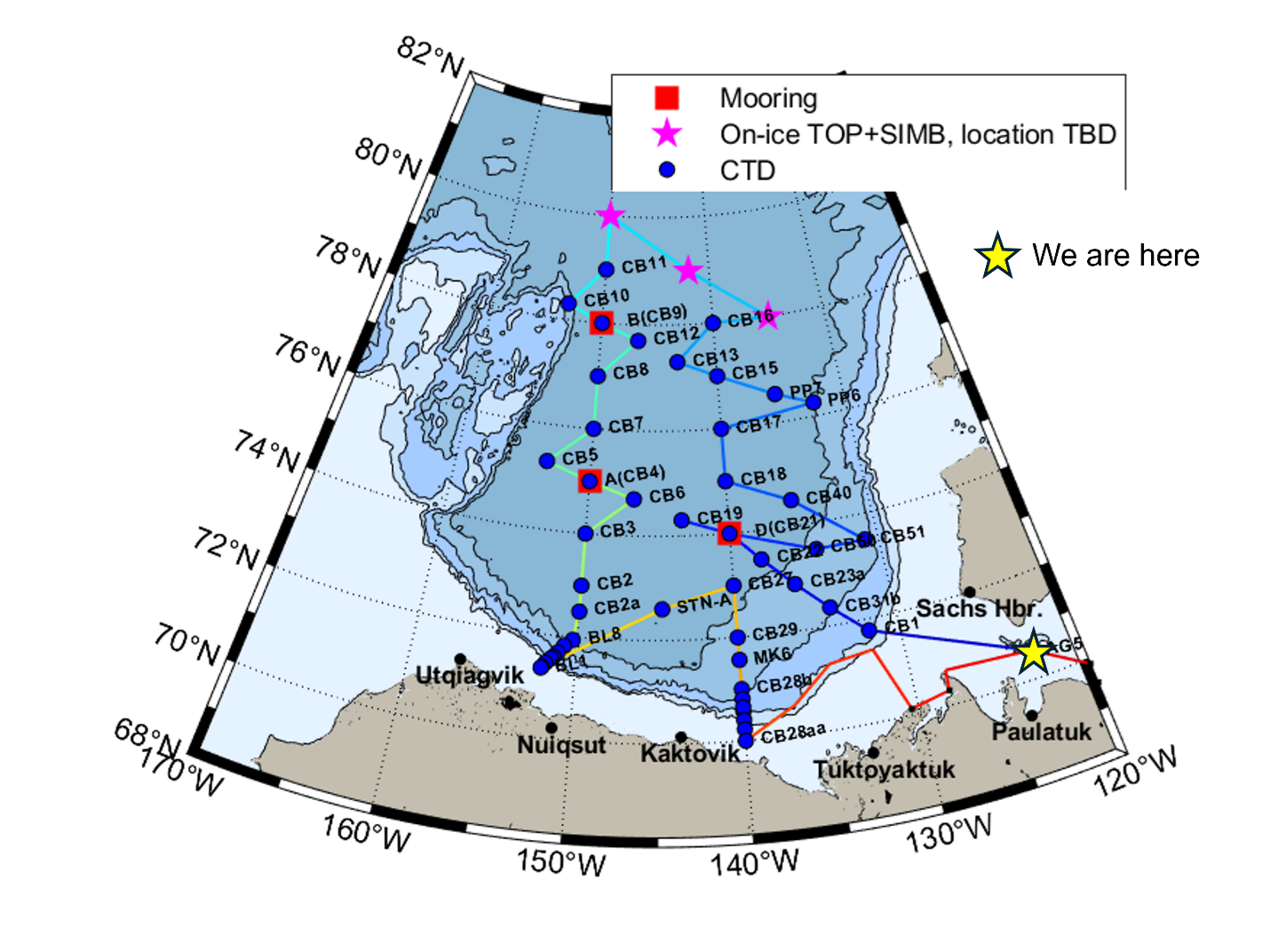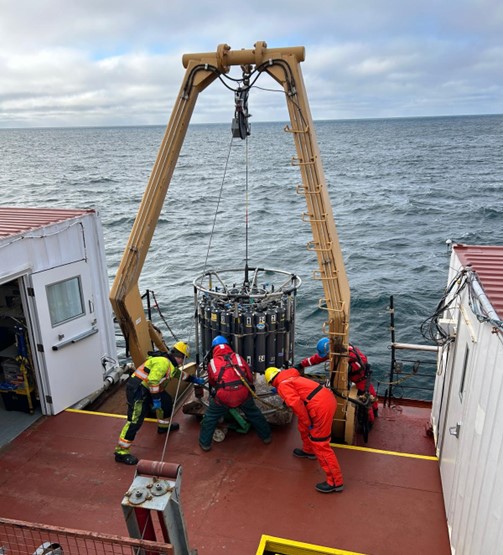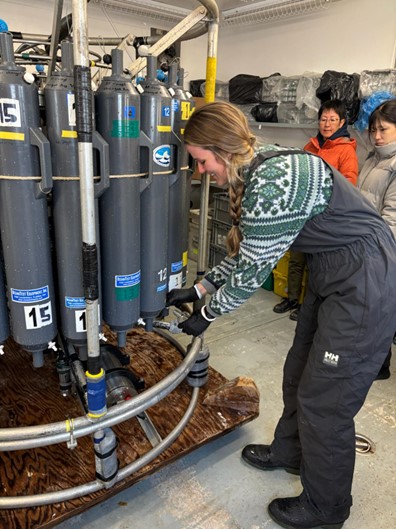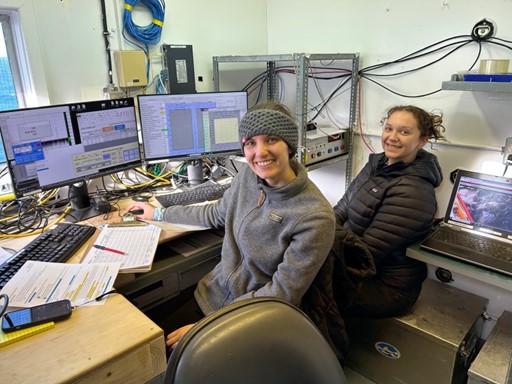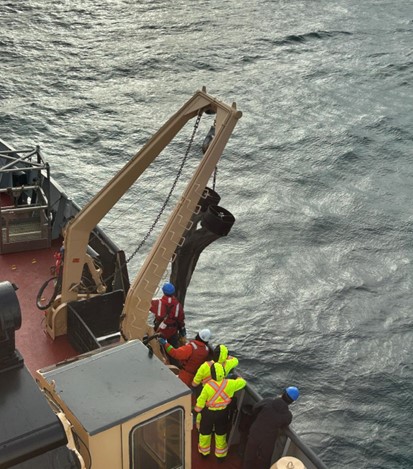Dispatch 4: A successful first station!
Jennifer Kosty (Yale University)
September 22, 2025
18:00 local, 70.43◦N, 124.07◦W
Conditions:
- Cloudy
- 0% sea ice cover
- -1.5◦C
- Sunrise: 22-Sept-2025 07:58
- Sunset: 22-Sept-2025 20:17
- Day length: 12 hours, 19 minutes
Happy fall equinox! Today marks the start of a 6-month period during which the sun will never rise above the horizon at the north pole. We had an auspicious start to autumn, as the first science station of the 2025 expedition was a success! We completed two casts at AG-5, one designated for the collection of DNA/RNA samples and one regular geochemical cast. The night watch (Paige Hagel, Marguerite Larriere, Collette LeClerc, Magali Pucet) led the DNA/RNA cast at 10 am. We then broke for a quick lunch of trout, quesadillas, tater tots, and roasted veggies. After lunch, both watches helped collect samples of phytoplankton and zooplankton on the fore deck, by lowering sampling nets down to a depth of 20 m and 100 m, respectively. The day watch (Chris Clarke, Celine Gueguen, Jennifer Kosty, Annabel Payne, Andrew Ross) then took over for the geochemical cast at 1 pm.
We sent the CTD rosette down to a depth of 640 m, which is approximately twice the height of the Eiffel Tower. This is one of the shallower casts that we will complete throughout the cruise, as the average depth of the central Canada Basin is around 3800 m deep! The rosette travels through the water column at a rate of 0.5 - 1 meters per second, so the two casts we completed today each took around an hour. As the rosette travels upwards through the water column, the CTD operator (Days: Jennifer Kosty, Nights: Collette LeClerc) closes the Niskin sampling bottles at specific depths to collect water samples.
Once the rosette is safely on board, we begin the process of sampling, i.e. transferring the water collected in the 10 L Niskin bottles to smaller containers that will later be used to measure individual properties. Some of these samples will be analyzed by technicians who are traveling on the Louis, while others will be shipped around the world to the scientists who will analyze them.
This evening, we are steaming towards our next station of CB-1, where we will repeat this entire process tomorrow morning!
